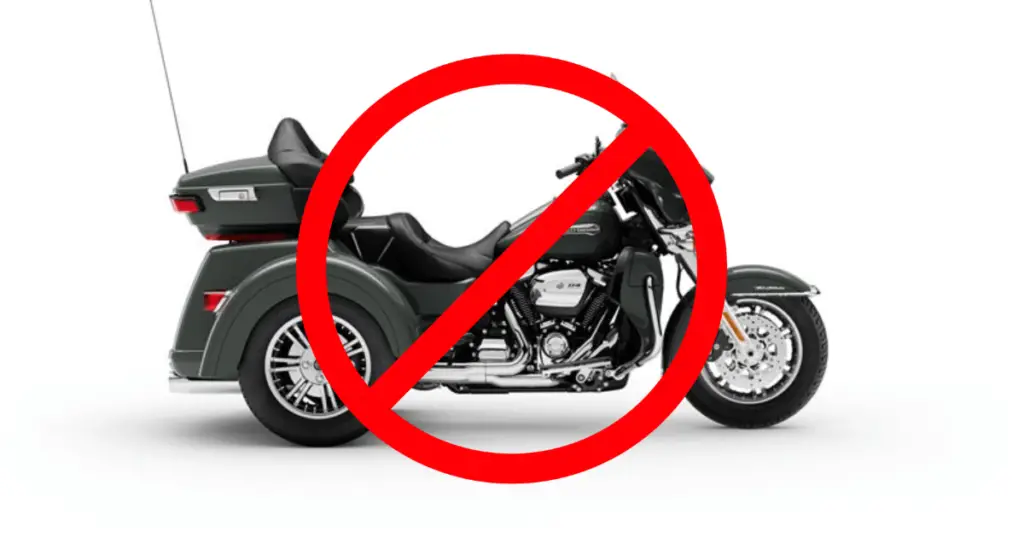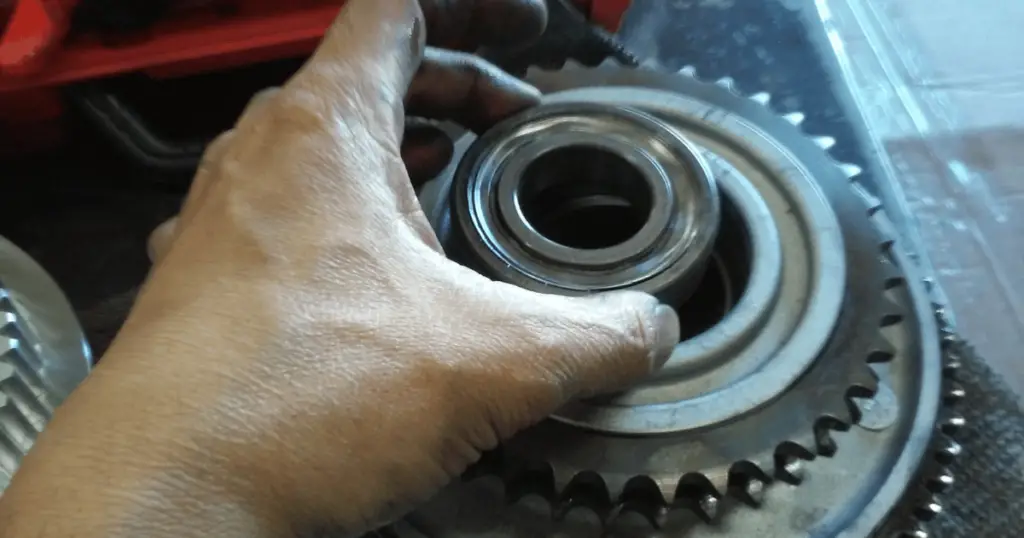Riding any of the Harley trikes is an exhilarating experience across the board, but this three-wheeled marvel in particular isn’t devoid of potential issues. Like any machine, it’s susceptible to problems, some of which can be addressed easily, while others require more attention. As a Harley Davidson Tri Glide owner – or a potential buyer – it’s crucial to understand these common problems found in Tri Glides, to ensure a smooth and safe ride. So what’re you waiting for? Let’s get to it!
Related:
– Harley Death Wobble Model Years, Causes, Signs and More
– Tri Glide Reverse Motor Problems: Tips, Fixes, and More
What Are These Harley Tri Glide Problems I Speak Of?

Here are some of the common issues that Harley Tri Glide owners have reported encountering, and some potential causes – you’ll find a more detailed answer down below:
- Unstable Ride (Suspension Issues)
- Causes: Worn suspension components, poor alignment.
- Throttle Response Problems
- Causes: Faulty throttle sensor, clogged fuel injectors.
- Leaky Fluids
- Causes: Worn seals/gaskets, overfilled reservoirs.
- Brake Related Issues
- Causes: Worn brake pads/discs, low brake fluid.
- Exhaust Problems
- Causes: Damaged mufflers, exhaust leaks.
- Excessive Oil Consumption
- Causes: Worn engine parts, improper oil grade.
- Cooling System Problems
- Causes: Low coolant, leaking coolant system.
- Electrical Issues
- Causes: Faulty wiring, dead battery.
- Transmission and Clutch Problems
- Causes: Worn clutch plates, fluid leaks.
Unstable Ride (Suspension Issues)
An unstable ride is one of the most common issues that riders face on this three wheeled machine. This can be caused by several factors, including improperly inflated tires, worn shock absorbers, or poor wheel alignment. In some cases, frame damage or engine trouble can also lead to instability. In some cases it’s a matter of steering sensitivity which is easily remedied by a steering damper.
Throttle Response Problems
Some riders have reported issues with the throttle response, which can be caused by a damaged or frayed cable connecting the throttle grip to the throttle body. Dirt or debris build-up in the throttle body can also cause this problem.
Related: Harley Davidson Sputtering Issues? Read This Immediately
Leaky Fluids
Leaking fluids is another common issue that can be seen in Tri Glides. This can be due to problems with the engine oil cooler lines, transmission oil cooler lines, power steering fluid reservoir, or radiator overflow tank.

What Can You Do About These Leaky Fluids? What Should You Know?
Leaky fluids are common but preventable. Regularly checking oil and brake fluid levels, and responding promptly to any signs of leakage, can prevent larger issues down the road. Again most importantly, check the fitting lines on the oil cooler for tightness every now and again.
Brake Related Issues
Brake-related issues are also prevalent among Harley Davidson Tri Glide riders. Common problems include the bike pulling to one side when braking or taking longer than expected to stop. These issues can often be traced back to worn brake pads or low brake fluid levels.
What Should You Do About These Issues?
Regularly inspecting the brake system, from pads to fluid levels, is crucial. If you notice any inconsistencies in braking, it’s time for a check-up.
Exhaust Problems
Exhaust-related problems, such as strange noises or backfiring, can also occur in Harley Tri Glides. These issues can be caused by damaged or missing muffler packing, leaks in the exhaust pipes or mufflers, or loose mounting hardware.
Excessive Oil Consumption
Excessive oil consumption is another problem that some Harley Davidson Tri Glide owners have reported. This issue can lead to engine damage if not addressed promptly. Some owners try to compensate by adding extra oil, but I’d strongly advise against adding too much oil to the engine as this can cause other problems entirely.
Cooling System Related Problems
Some Tri Gliders have also faced issues with the cooling system, such as overheating. This can be due to problems with the coolant, dust and debris on engine fins, or other factors.
Electrical Issues
Electrical issues, such as malfunctioning lights or the bike stalling, can also occur in these Tri Glides. These problems can be due to a damaged battery, loose or corroded electrical connections, or other factors.
Transmission and Clutch Problems
Finally, transmission and clutch problems are also common in Harley Tri Glides. These issues can make it difficult for the bike to shift gears and can be caused by various factors.

Were Any Tri Glides Recalled?
Yes, Harley-Davidson has issued recalls for certain Harley Tri Glide models in the past due to potential safety issues.
What Recall Was It?
One of the most significant recalls was due to a potential issue with the brake lights. In this case, the lights could illuminate without the rider applying the brakes, posing a risk of confusing other drivers and increasing the risk of collisions.
What Did Harley Do About It?
In response to this recall, Harley-Davidson dealers updated the software on Touring and CVO Touring motorcycles. For Trike and CVO Trike motorcycles, a new pressure switch was also installed. All repairs were performed free of charge.
Most Affected Models, Improvements Made, and More
Theis Harley Davidson has evolved significantly over the years, with earlier models facing different challenges compared to recent ones.
Early Models (2009-2014):
- These initial years often encountered suspension and throttle response issues. Leaky fluids and brake-related problems were also more prevalent.
- Electrical issues and oil consumption were common complaints.
Mid-Range Models (2015-2018):
- Improvements were seen in suspension and electrical systems.
- However, some models still struggled with transmission and clutch problems, as well as cooling system issues.
Recent Models (2019-Present):
- The latest Tri Glides show marked improvements in most areas.
- Advances in technology and design have reduced problems like excessive oil consumption and exhaust issues.
- While not entirely devoid of challenges, these models boast better reliability overall.
Comparatively, recent models demonstrate the commitment of Harley Davidson to addressing past issues, offering riders a more robust and reliable experience. However, it’s always crucial for owners to stay informed about potential recalls and model-specific issues. Regular maintenance remains key, irrespective of the model year, to enjoy what these Harley Davidson trikes have to offer.
Recap of What You Should Know
As a proud Harley Tri Glide owner – or potential buyer – it’s important to be aware of these common issues. While some of these problems can be easily resolved, others require more attention. Regular maintenance and inspections can help prevent many of these issues and ensure that your Harley Tri Glide continues to provide a smooth and safe ride. Always remember, it’s better to address problems early than to wait until they become more serious. Happy riding!
This comprehensive guide should equip you with the knowledge you need to identify and address common Harley Tri Glide problems. Safe riding, and enjoy the journey ahead!
Next read: Harley Oil Breather Problems? I Have The Answer!